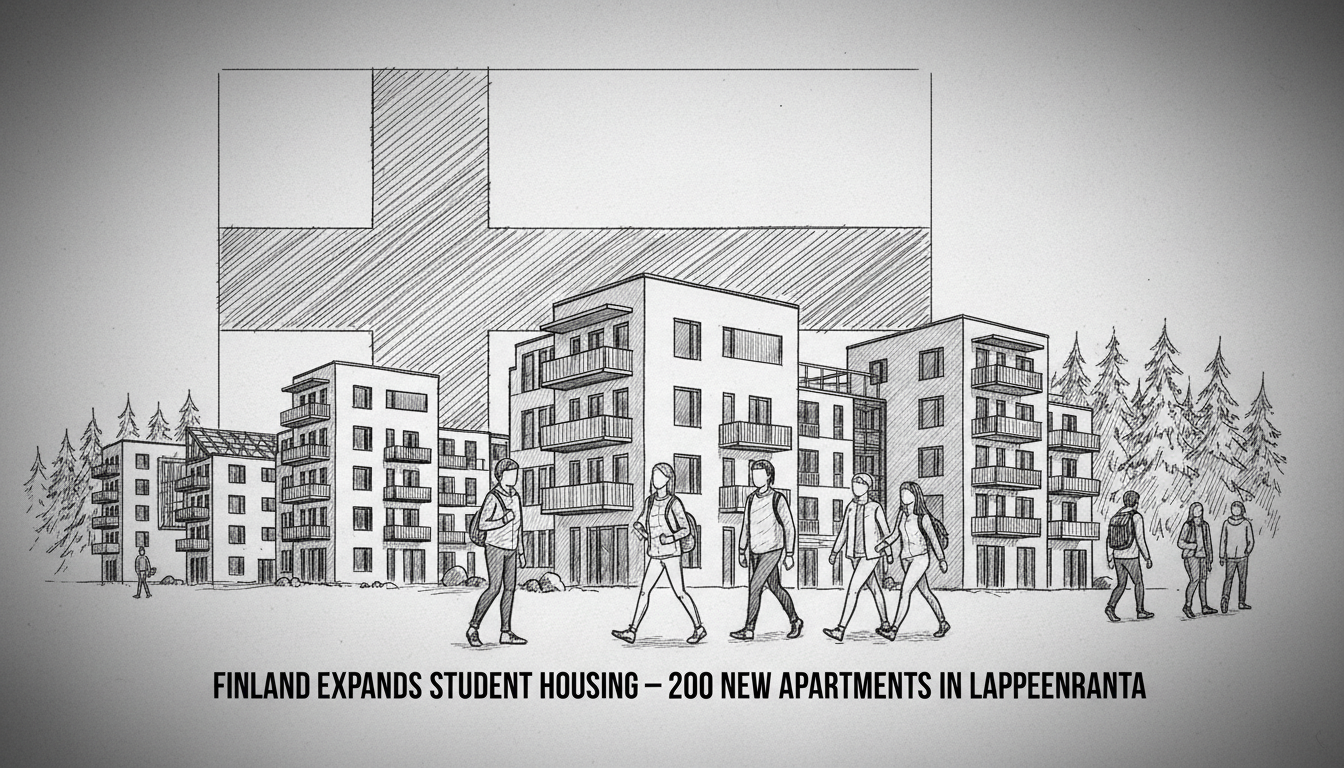Finland's Lappeenranta Student Housing Foundation has signed a preliminary agreement with construction firm YIT to build 200 new student apartments in the Kesämäki district. The project will proceed using state-guaranteed interest subsidy loans, marking another strategic investment in Finnish higher education infrastructure. This development addresses the chronic student housing shortage affecting university cities nationwide.
Student housing foundations operate as non-profit organizations across Finnish university cities. They provide affordable accommodation options for the country's extensive higher education population. The Finnish government supports these foundations through various financial instruments, including the interest subsidy loans being utilized for this Lappeenranta project. These mechanisms keep rental prices accessible for students while ensuring construction quality meets national standards.
Lappeenranta faces particular pressure as home to LUT University, which has expanded its international programs significantly in recent years. The city's growing student population requires continuous housing development to maintain educational quality and student wellbeing. The Kesämäki district specifically has emerged as an educational hub, with proximity to campus facilities making it ideal for student accommodation.
Why does this construction matter beyond providing beds? Student housing availability directly impacts Finland's international competitiveness in higher education. Foreign students considering Finnish universities consistently rank housing security among their top concerns. Projects like the Kesämäki development signal Finland's commitment to maintaining world-class educational infrastructure. They also demonstrate the practical implementation of government policies supporting regional development and educational accessibility.
The timing reflects broader national priorities in education policy. Finland continues investing in its university system despite global economic uncertainties. The state-backed financing model shows confidence in both the construction sector and long-term educational strategy. These apartments will likely house both domestic and international students, supporting Finland's goal of increasing foreign student enrollment.
What challenges might this project face? Construction timelines in Finland typically extend through multiple seasons due to weather constraints. Material availability and workforce capacity could also influence progress. The real test will come when these apartments hit the rental market and we see if demand matches supply in the Lappeenranta student housing sector.
The partnership between a student housing foundation and major construction company follows a proven Finnish model. It combines non-profit oversight with commercial construction expertise. This approach has delivered quality student accommodation across Helsinki, Tampere, and Oulu over recent decades. The Lappeenranta project extends this successful template to southeastern Finland.
Local businesses will benefit from increased student residents in Kesämäki. Retail, services, and cultural venues gain regular customers while the city strengthens its educational profile. For international observers, this development exemplifies Finland's systematic approach to supporting its education ecosystem through practical infrastructure investments.

